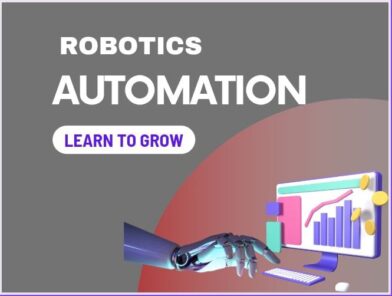The field of robotics has seen tremendous growth and development in recent years, and it’s only getting more advanced. Robots are now being used in a wide range of industries, from manufacturing and healthcare to agriculture and transportation. As technology continues to improve, robots are becoming increasingly intelligent and versatile, and they’re poised to revolutionize the way we live and work. In this blog post, we’ll take a closer look at the future of robotics and how it’s likely to impact our lives.
One of the biggest advantages of robotics is their ability to automate repetitive tasks. This makes them ideal for use in manufacturing, where robots can perform the same task over and over with consistent accuracy and speed. This reduces the need for human workers to perform these tasks, which can be tedious and time-consuming, freeing them up for more complex and creative work. As a result, robots have already had a major impact on the manufacturing industry, and this trend is set to continue.
But robotics isn’t just limited to manufacturing. In fact, robots are being used in a wide range of industries, including healthcare. Robotic surgery, for example, is becoming increasingly common. These systems use robotic arms and advanced imaging technology to perform minimally invasive surgeries with greater precision and control than traditional methods. This can lead to shorter recovery times, less scarring, and fewer complications. In the future, we can expect to see even more advanced robotic systems in healthcare, with the potential to improve patient outcomes and reduce healthcare costs.
Another area where robotics is making a big impact is in agriculture. Farms are increasingly turning to robots to help with tasks such as planting, harvesting, and weeding. These robots can work around the clock, in any weather, and can perform tasks with greater precision and efficiency than humans. This can lead to increased crop yields, reduced waste, and lower costs. As the global population continues to grow, there will be increasing pressure on farmers to produce more food, and robotics will play a key role in meeting this challenge.
Robots are also set to play a big role in transportation. Self-driving cars are already being developed and tested by companies such as Tesla and Google, and they have the potential to transform the way we travel. These cars will be able to drive themselves, without the need for a human driver, which could lead to reduced traffic congestion, fewer accidents, and lower emissions. In addition, they could also make transportation more accessible to those who are unable to drive, such as the elderly and disabled.
The future of robotics is not without its challenges, however. One major concern is the impact that robots will have on employment. As robots become more advanced and capable, they will inevitably replace some human workers. This could lead to job losses and economic disruption, particularly in industries that are heavily reliant on low-skilled labor. It will be important for policymakers to consider how to manage this transition and ensure that workers are able to adapt to the changing job market.
Another challenge is ensuring that robots are safe and reliable. As robots become more intelligent and autonomous, they will need to be able to make decisions and take actions that are safe and ethical. There is also the risk of cyber attacks and other security threats, which could compromise the safety and functionality of robots. It will be important to develop robust safety standards and cybersecurity measures to address these risks.
In conclusion, robotics is set to revolutionize the way we live and work in the coming years. From manufacturing and healthcare to agriculture and transportation, robots have the potential to automate repetitive tasks, increase efficiency, and improve outcomes. However, this transformation is not without its challenges, and it will be important to address issues such as job displacement and safety concerns. With the right approach, we can harness the power of robotics to create a more efficient, sustainable, and prosperous future.











